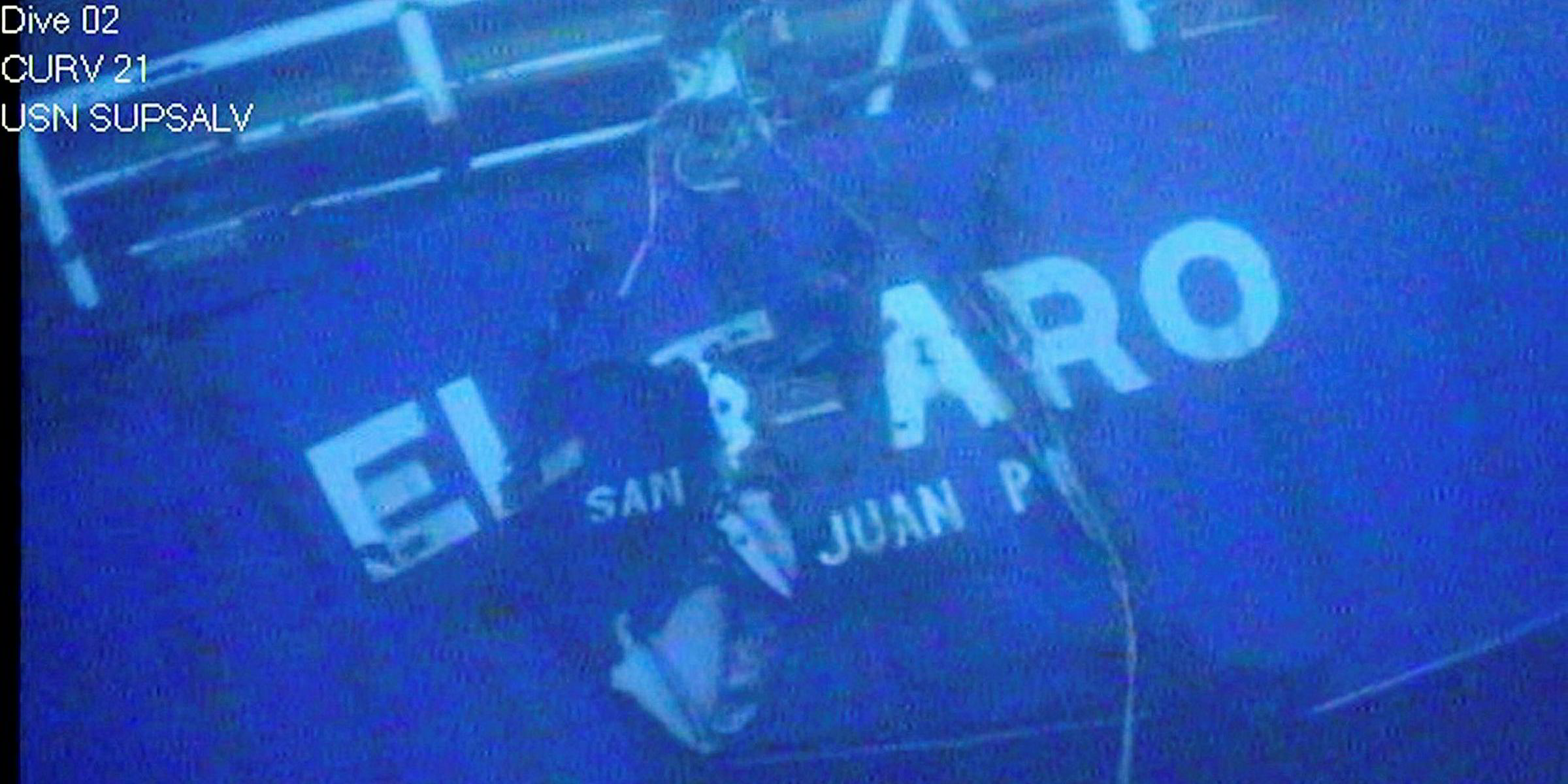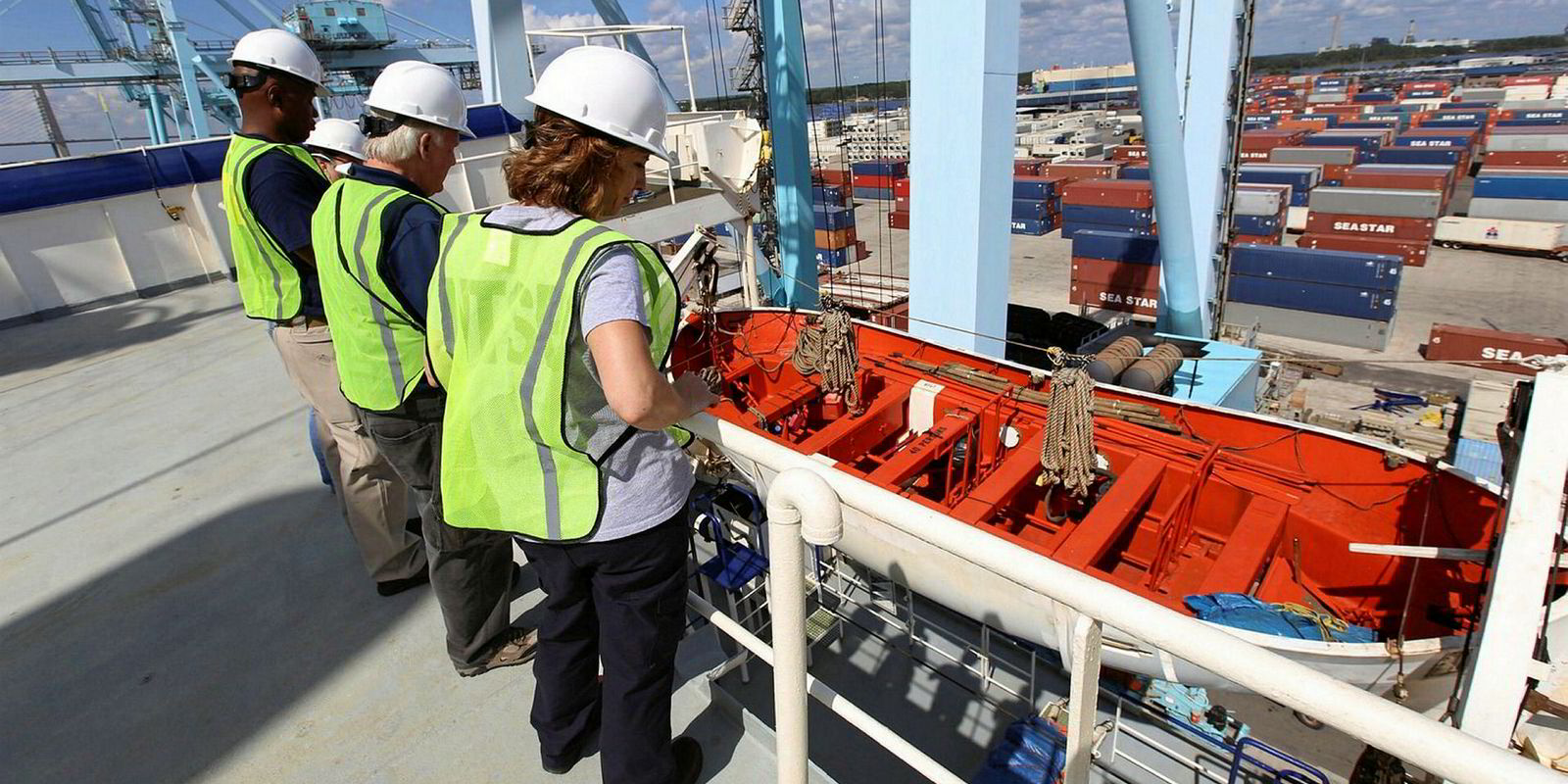Late on the evening of 30 September 2015, two able-bodied seamen discussed safety equipment as the El Faro headed towards Hurricane Joaquin on what would be its final journey.
No newbie to stormy seas, 60-year-old Jack Jackson had already laid out his immersion suit but told his colleague that he wished he had a pocket electronic beacon like the one owned by the ship's alternate chief mate, according to a transcript of bridge conversations on the combination containership/ro-ro before it sank the next morning.
"Ain't got no EPIRB," responded his fellow able-bodied seaman, referring to the emergency position-indicating radio beacon.
Jackson's concern for access to the technology was echoed recently by the US National Transportation Safety Board (NTSB) as it issued a series of recommendations following the sinking of the 5,330-lane-metre El Faro (built 1975), the TOTE Maritime vessel that went down with all 33 of its crew onboard.
The NTSB issued a series of recommendations calling for changes by the US Coast Guard, IMO and even the Federal Communications Commission (FCC) in covering vessel stability, lifeboats and crew training.
Among them, the safety investigation agency has called on the US Coast Guard to require all US-flag ships to issue crew members with a personal locator beacon.
"Providing all persons employed onboard vessels in coastal, Great Lakes, and ocean service with personal locator beacons would enhance their chances of survival," the NTSB says.
The problems with beacons were among a litany of findings by the agency after finally completing an unprecedented two-year investigation into the deadliest US-flag shipping casualty in three decades.
The NTSB notes that the older EPIRB system on the El Faro, which did not have the capability to transmit global positioning system data, reduces the accuracy of the locations transmitted by the beacon. The agency acknowledges that in the case of the El Faro, positioning errors may not have impacted the ultimately unsuccessful search-and-rescue efforts, but it nonetheless recommended that the FCC bans ship beacon systems without GPS.
Open hatch indicators
Among other changes proposed by the NTSB board members, the report says the US Coast Guard should ask the IMO to require ships to have indicators on the bridge and elsewhere.
The suggestion is rooted in one of the key factors blamed for the sinking of the US-built El Faro: a hatch was open on the second deck, allowing water to enter and compromise its watertight envelope.
"If the second deck access hatch [scuttle] had been fitted with a remote open/close indicator at a manned location, such as the bridge, the crew would have known that the watertight hatch to cargo hold 3 was open," the NTSB says.
The recommendations also seek new IMO rules improving ro-ro structural improvements, as well as regulations requiring ships to be retrofitted with alarms related to bilge flooding.
Many of the recommendations to the US Coast Guard focus on training related to weather. In its investigation into the El Faro's sinking, the NTSB determined that the ship's master, Michael Davidson, had sufficient weather data to make a decision about routing in light of the storm.
But the agency says he did not use the most up-to-date weather data available when he relied on data received in his cabin rather than the weather information received on the bridge. When the second and third mate called him to suggest course changes, the NTSB says Davidson should have returned to the bridge.
The NTSB says advanced training on meteorology and ship handling in heavy weather would have improved his decision making but he was exempt from such training being the the captain of the El Faro.
The NTSB urged the US Coast Guard to push for stronger meteorology training for officers. And it urged the agency to publish policy guidance calling for bridge resource management training aimed at improving a "cohesive team environment" in situations that include storm avoidance scenarios.
It also called for a complete review of the Alternate Compliance Program, which streamlines vessel inspections by approved classification societies.
The NTSB and US Coast Guard have issued a series of recommendations to TOTE Maritime, including training improvements and an external safety audit.
Company spokesman Darrell Wilson says TOTE will review the agencies’ reports closely when they are finalised.
“We as a company intend to learn everything possible from this accident and the resulting investigations to prevent anything similar from occurring in the future,” he said. “We will also assist both investigative bodies in communicating lessons learned from the accident to the broader maritime industry.”
The US Coast Guard should:
- revise regulation on the impact of inclination on propulsion and other systems
- propose IMO rules requiring open hatch indicators on the bridge and elsewhere
- propose IMO rules requiring bilge high-level alarms for existing ships
- propose IMO regulations requiring damage control plans for existing ships
- publish policy guidance for bridge resource management training covering weather avoidance scenarios
- require properly operating meteorological equipment
- conduct a complete review of the Alternate Compliance Program




